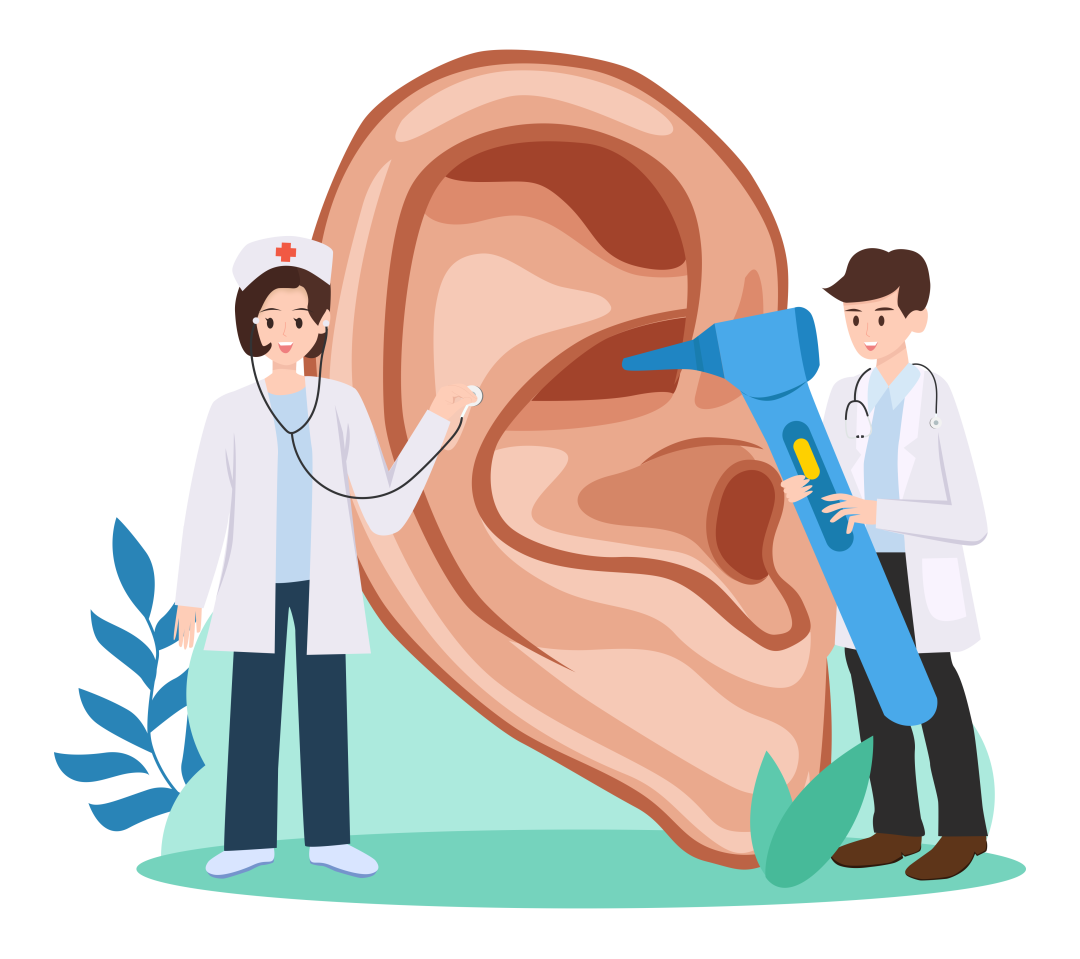The World Health Organization (WHO) has released the "World Hearing Report," stating that one-fifth of the global population suffers from hearing loss. Hearing loss affects over 1.5 billion people worldwide, including 430 million people with moderate or higher levels of hearing loss in their better ear. The WHO recommends providing ear and hearing care services to everyone.
How can we detect hearing loss early?
Today, we will talk about it. Pure-tone audiometry is the most common hearing test in audiology clinics. Before the test, the audiologist will ask the patient a few simple questions and then ask them to sit in a soundproof booth, wear headphones, and press a button whenever they hear a sound, no matter how small.
After making sure the patient understands the instructions, the audiologist will go back to the control room and play pure tones that have been calibrated according to certain rules. The patient will respond to the sounds, and the audiologist will record the results after each threshold test. A complete audiogram is generated at the end of the test. Children over five years of age and adults can use pure-tone audiometry to test their hearing.
Regular hearing tests can help detect hearing loss earlier and receive targeted treatment earlier, increasing the likelihood of recovery. In summary, the key is early screening, early detection, early intervention, and early rehabilitation.

Through hearing tests, we can also learn about the following:
-
Progressive hearing loss: This means that hearing has gradually declined over a period of time and may continue to decline in the future.
-
Sudden hearing loss: Hearing loss occurs suddenly, possibly due to a sudden loud noise that causes ear trauma (such as an explosion sound). It could also be waking up one morning and finding the ear muffled and unable to recover immediately. If you encounter this situation, please go to the hospital for treatment immediately. Note: Sudden hearing loss can be treated and hearing can be restored.
-
Fluctuating hearing loss: This means that hearing loss is better or worse at different times. Whether hearing aids are needed should be comprehensively judged by the audiologist based on the hearing test.
So, who is more likely to experience hearing loss? Newborns, children, the elderly, people using ototoxic drugs, and people who have been exposed to noisy environments for long periods of time are all more prone to hearing loss.
If you want to take a hearing test, it is recommended to go to a professional hearing center for a detailed hearing test. If necessary, the audiologist will recommend suitable hearing aids based on your hearing condition, listening needs, and lifestyle.
Tips for hearing tests
Clinics recommended: Professional hearing center/ENT department (hospital)
Suggested tests for adults:
Currently, pure-tone audiometry is the most common test in most hearing centers. Pure-tone audiometry can accurately evaluate the patient's hearing at different frequencies.
For children:
Otoacoustic emissions (OAE): If the infant has cochlear lesions, no otoacoustic emissions will be produced.
Automated Auditory Brainstem Response (AABR): Can reflect whether the function of the cochlea and the cochlear pathway is normal.
Auditory Steady-State Response (ASSR): Can provide detailed hearing evaluation for infants and young children.
Behavioral Observation Audiometry (BOA): It evaluates hearing by observing the infant's non-conditioned reflex to sound.
Visual Reinforcement Audiometry (VRA): By establishing the "audio-visual" conditioned reflex in young children, the hearing threshold can be obtained.
Play Audiometry (PA): It is a method of integrating the hearing test into children's game activities to complete the hearing test.
Frequency of check-ups: Once every six months or once a year.
Further actions after examination: If hearing loss patients cannot be cured by medical means, they may benefit from using hearing aids and cochlear implants.

Common Q&A of hearing loss detection:
Whether it is an adult or a child, if hearing abnormalities or discomfort in the ears are found, they should go to the hospital or hearing center for a hearing test as soon as possible. If necessary, the audiologist will inform you of the degree and type of hearing loss and provide professional advice.
Why is it advocated to detect hearing loss early?
"Early detection" is one of the three principles of auditory and language rehabilitation. The earlier the hearing loss is discovered, the earlier the intervention can be made to maximize the preservation of the cognitive function of the "auditory and speech" brain region.
How can we tell if adults or children have hearing loss?
- No response when called or may make inappropriate responses
- Turn up the volume of electronic devices, such as watching TV or listening to music
- Can hear sound but cannot understand what is being said
- Difficult to hear high-frequency sounds, such as doorbells
- Complaining of ringing in the ears (tinnitus)
- ...
What can we do if hearing loss is found?
Like children, adults must identify hearing loss as early as possible and actively start rehabilitation training and use assistive devices, such as hearing aids and cochlear implants. Hearing aids or cochlear implants are effective measures to help you hear again, and rehabilitation is an important means to help you return to normal social life.
Remember, the earlier hearing loss is detected, the earlier intervention is implemented, and the earlier rehabilitation is started. Early screening, early detection, and standardized treatment are our most powerful weapons against hearing loss.

